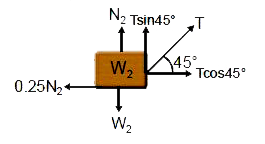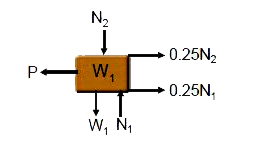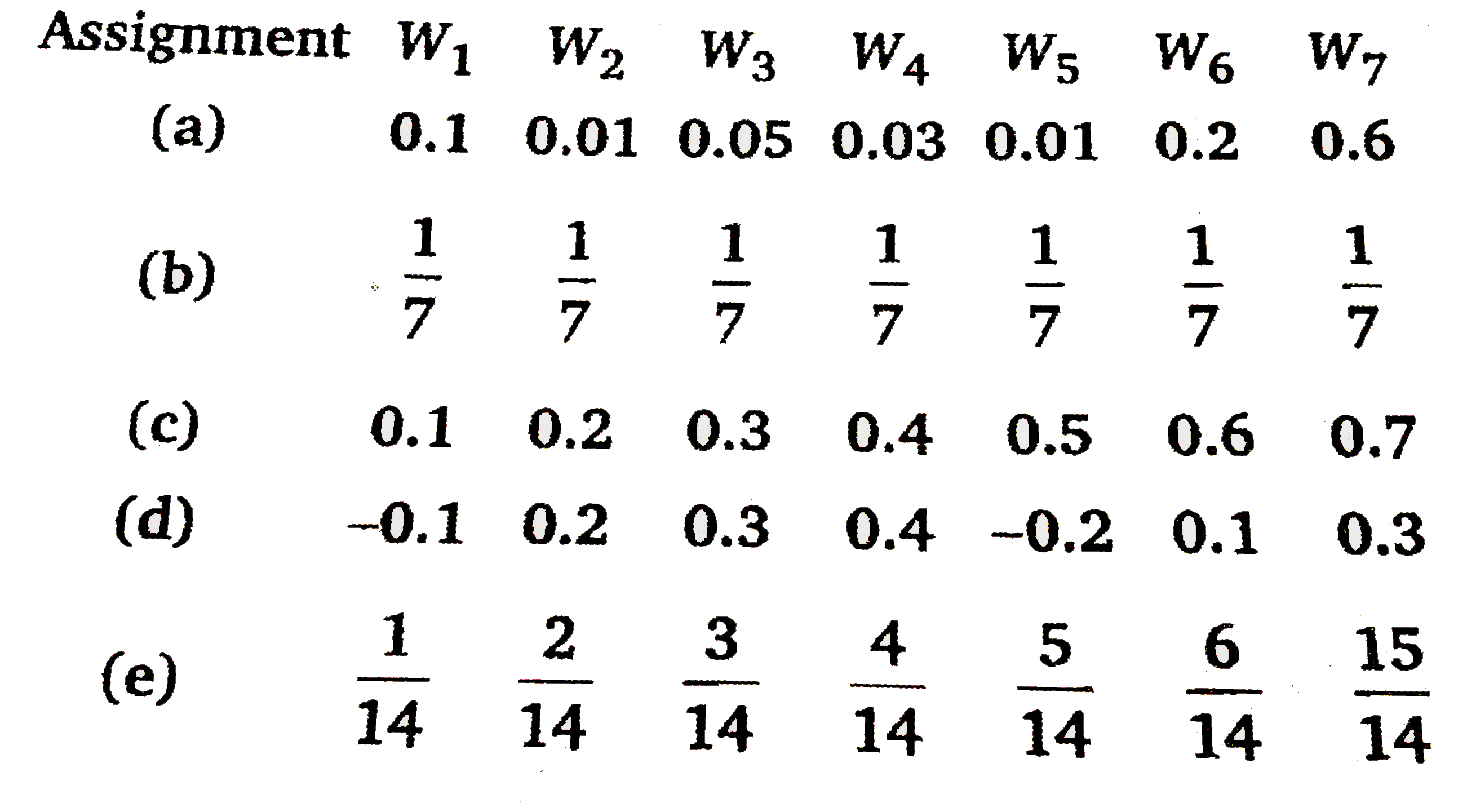दिखाये गये चित्र में W1=200N,W2=100N और सभी सम्पर्क तलों के लिए μ=0.25 है। पिण्ड W1, पिण्ड W2 के ङ्केपनीचे से ठीक फिसलाना हि होगा ।

W1 पर 50 N का बल लगाकर खींची जाय
W1 पर 90 N का बल लगाकर खींचा जाय|
रस्सी AB में तनाव 10 N है|
रस्सी AB में तनाव 20 N है|
The correct Answer is:B, D

For W2:
N2=Tsin45∘=W2=100……….(A)
Tcos45∘=0.25N2……..(B)
⇒T=20√2N,N2=80N

For W1:
P=0.25(N1+N2)………… ( C)
N2+W1=N1............. (D) ⇒N1=280N
Topper's Solved these Questions
Similar Questions
एक चिकने तल पर रखे ब्लॉक B पर एक परिवर्ती बल F=10t लगाया जाता है। A व B के बीच घर्षण गुणांक 0.5 है। (t सेकंड में समय है व प्रत्येक का प्रारम्भिक वेग शून्य है)

View Solutionएक वस्तु पर समय के साथ परिवर्ती बल →F=(3ˆi+5ˆj)N लग रहा है जिसके कारण इसकी स्तिथि समय के साथ →s=(2t2ˆi−5ˆj) की तरह बदलती है यहाँ t सेकंड में है इस बात द्वारा प्रारंभिक 2s में किया गया कार्य होगा-
View SolutionIf w1.w2,w3 and w4 are work done in isothermal, adiabatic, isobaric, and isochoric reversible expansion for an ideal gas, respectively, then
View SolutionThe relative density of a material of a body is found by weighing it first in air and then in water. If the weight of he body in air is W_(1) = 8.00 +- N and the weight in water is W_(2) = 6.00 +- 0.05 N , then the relative density rho_(r ) = W_(1)//( W_(1) - W_(2)) with the maximum permissible eror is
View SolutionTwo weights W_(1) and W_(2) in equilibrium and at rest, are suspended as shown in figure. Then the ratio (W_(1))/(W_(2)) is :
View SolutionIn the arrangement shown, W_(1) = 200N, W_(2) = 100 N,mu = 0.25 for all surfaces in contact. The block W_(1) just slides under the block W_(2)
View SolutionA dump-bell consists of two weights W1 and W2(W2>W1) and is hinged at a point distant l1 and l2 from W1 and W2 , respectively . Establish the criterion of stable equilibrium for the vertical position of the dump-bell.
View SolutionWhich of the following cannot be valid assignment of probabilities for outcomes of sample space S={W1,W2,W3,W4,W5,W6,W7}

View Solutionप्रतिदर्श समष्टि S = {W_(1),W_(2),W_(3),W_(4), W_(5),W_(6), W_(7)} के परिणामों के लिए निम्नलिखित में से कौन - से प्रायिकता निर्धारण वैध नहीं हैं :
परिणाम W1W2W3W4W5W6W7(a)0.10.010.050.030.010.20.6(b)17171717171717(c)0.10.20.30.40.50.60.7(d)−0.10.20.30.4−0.20.10.3(e)1142143144145146141514
View SolutionIf W1W2,W3andW4 are work done in isothermal, adiabatic, isobaric and isochoric reversible process, the correct order (for expansion) will be
View Solution[W_(1),W_(2),W_(3)" are apparent "],[" weights of a solid in water at "],[0^(0)C,4^(0)c" and "50^(0)c],[" respectively.If expansion of "],[" solid is negligible,then "],[" A) "W_(1)=W_(2)=W_(3)],[" B) "W_(1)>W_(2)>W_(3)],[" C) "W_(3)>W_(1)>W_(2)],[" D) "W_(3)>W_(2)>W_(1)]
View SolutionIf W1:W2=2:3 and W1:W3=1:2 then W2:W3 is
View Solutionचित्र में एक आदर्श गैस का कार्नो-चक्र प्रदर्शित किया गया है। माना कि प्रक्रमों a→b,b→c,c→d तथा d→a के दौरान निकाय द्वारा किए गये कार्य क्रमश: Wa→b,Wb→c,Wc→d तथा Wd→a है। तब निम्न संबंधो पर विचार कीजिए

(1) Wa→b+Wb→c+Wc→d+Wd→a>0
(2) Wa→b+Wb→c+Wc→d+Wd→a<0
(3) Wa→b+Wc→d>0
(4) Wb→c+Wd→a=0
निम्न में से कौन स संबंध सत्य हैं
View SolutionWhich of the following cannot be valid assignment of probabilities for outcomes of sample space S={W1,W2,W3,W4,W5,W6,W7}

View SolutionThe relative density of a material of a body is found by weighing it first in air and then in water. If the weight of he body in air is W1=8.00±N and the weight in water is W2=6.00±0.05N, then the relative density ρr=W1/(W1−W2) with the maximum permissible eror is
View Solution
